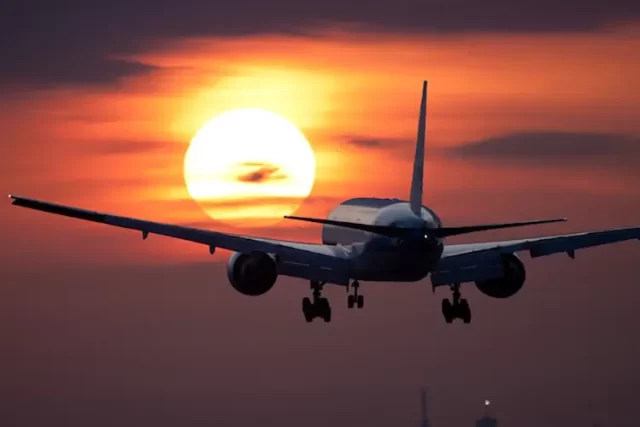
When traveling a significant distance, the most convenient method of travel is often via airplane. You’ll reach your destination much faster than by taking a car, bus, or train and be relieved of the stress of a long road trip along the way. Of course, flying is not without its fair share of challenges sometimes, so it pays to be prepared for anything when you show up at the airport. In this article, we discuss some tips, tricks, and strategies you can use to make your upcoming flight as smooth and stress-free as possible.
Gather Your Documents Well Ahead of Your Flight
When traveling within the United States, you won’t get very far without your driver’s license or another valid form of identification. If you’re vacationing outside of the U.S., bring your passport with you to secure entry into your destination country, along with re-entry back into your country of origin. If you don’t have a passport, apply for one now — it can take between 10 and 13 weeks for an application to be processed. Many countries require travelers to acquire a visa as well, so make sure to review the rules of the regions you’ll be traveling through.
It’s also wise to review your health insurance coverage before you step foot upon an airplane. Many health insurance plans only cover injuries or illnesses occurring within the U.S., leaving you footing a potentially massive medical bill if an accident occurs while you’re out of the country. In most cases, you can purchase travel medical insurance to supplement the coverage of your regular plan, thus providing financial protection in the event of a serious incident. Some travel insurance plans may also reimburse you the costs of a canceled or rescheduled trip.
Speak With Your Doctor About Any Health Concerns or Medications
If you have pre-existing medical conditions or are on prescription medications, speak to your primary care provider about how to best manage your health. It may be difficult to acquire prescription refills in other countries or your medications may be acquired under a different name. In some cases, your doctor may be able to provide a travel supply of your regular medication so that you don’t need to worry about finding a pharmacy at your travel destination.
Some countries are very strict about what drugs are allowed within their borders, so be sure to leave any medications inside their original, labeled case. You may also want to acquire a doctor’s note from your primary care provider stating what your medical condition is and what prescriptions you are on. Documentation of this nature can help you get through airport security checkpoints smoothly. Review the travel regulations of your destination to make sure none of your regular medications are banned and speak with your doctor about alternate arrangements if needed.
Carry a List of Emergency Contacts
Especially if you’re traveling solo, it’s a good idea to have a list of contacts on your person at all times. If you become incapacitated or require assistance, a passerby or medical professional can call one of the people on your list. It’s wise to have a physical copy of the people you may need to contact, the places you’ll be staying, and the information of the nearest medical facility. Noting the address and phone number of the nearest U.S. consulate or embassy may also be beneficial in an emergency.
Bring Some Cash
Carrying some money (in the local currency) is always a good idea, so you can purchase food, water, transportation, or even a book once you reach your destination. The amount you may need depends on your destination, but you should have enough money to get by in an emergency if you lose your credit card(s). That said, you shouldn’t take so much cash that you become an inviting target for petty thieves.
Be sure to set a travel notice to warn your bank of the fact that you’ll be traveling. If you don’t, your bank may suspect fraud once foreign transactions begin showing up on your account and suspend your card. This can be a major headache to deal with during a vacation! Setting a travel notice prevents you from encountering this issue over the course of your travels.
Have Your Flight Ticket With You
Have your flight ticket handy, either as a physical printout or e-ticket, once you get to the airport. You’ll need to use it to acquire your boarding pass, which is the documentation you’ll need to actually step foot on the airplane you’ll be traveling on. In some cases, airlines may offer an online check-in up to a day before your flight. This is particularly useful if you don’t have baggage to check, as you can skip the hectic sign-in line and receive your boarding pass electronically.
Make a Packing List & Check it Twice
It’s wise to take care of packing at least a few days before your flight, so you aren’t scrambling to throw together a suitcase on the day of your trip. Review your chosen airline’s size and weight requirements for baggage before arriving at the airport, so you aren’t unpleasantly surprised by an overweight baggage fee. Many airlines charge for each checked piece of luggage, so pack strategically to minimize the impact on your wallet.
You should pack comfortable clothes for each day you’re traveling, unless you’re certain that you’ll have access to a laundry room. Be sure to check the weather forecast for your destination, so that you aren’t too cold or too warm. You may want to slip a few outfits into your carry-on, just in case your bags are lost or delayed.
Bring enough personal hygiene items to get you through your trip. You will want to pack a toothbrush, toothpaste, deodorant, and shampoo at a bare minimum. Purchase travel-sized containers, since bringing large quantities of liquids is restricted on most airplanes. Keep liquids inside a plastic bag, so that your other items aren’t ruined if a bottle leaks.
Get to the Airport Early
Especially if you’re a first-time flier, get to the airport well in advance of your scheduled departure time. It’s generally recommended that you arrive two hours early, as this will give you plenty of time to pick up your boarding pass, check baggage, and get through security. Many airlines cut off check-ins between 30 and 60 minutes of the flight’s departure time, so don’t risk missing your travel window!
You may consider joining the TSA PreCheck® program to reduce the amount of time you spend waiting in security lines. The cost of TSA PreCheck®, at the time of this article’s writing, is $78 for five years. Without joining the PreCheck program, you’ll need to head through the regular security line once you acquire your boarding pass and check your baggage. Most of the time, your baggage will be screened and you’ll walk through a scanner. Some people are randomly selected for additional security screening, which can take a substantial amount of time.
Plan Ahead & Arrive Prepared
By preparing for your flight well in advance, from booking your ticket to packing, you stand the best chance of experiencing a smooth, streamlined travel experience. Make sure to pack all of the clothing, medications, and toiletries that you’ll need and weigh your bag to avoid additional fees at the airport. We hope that this article helps you prepare for your next trip, whether it’s within the U.S. or across the world!





